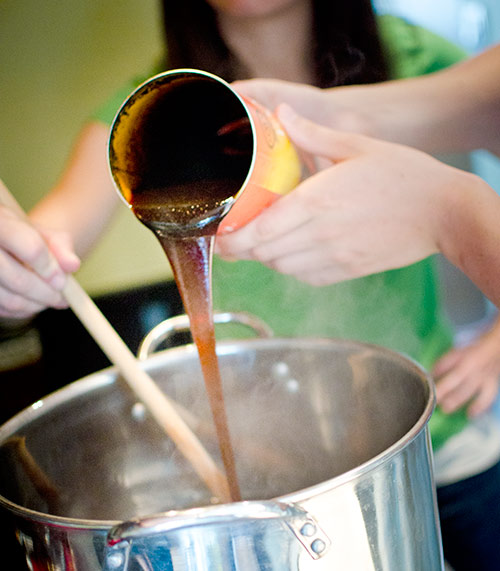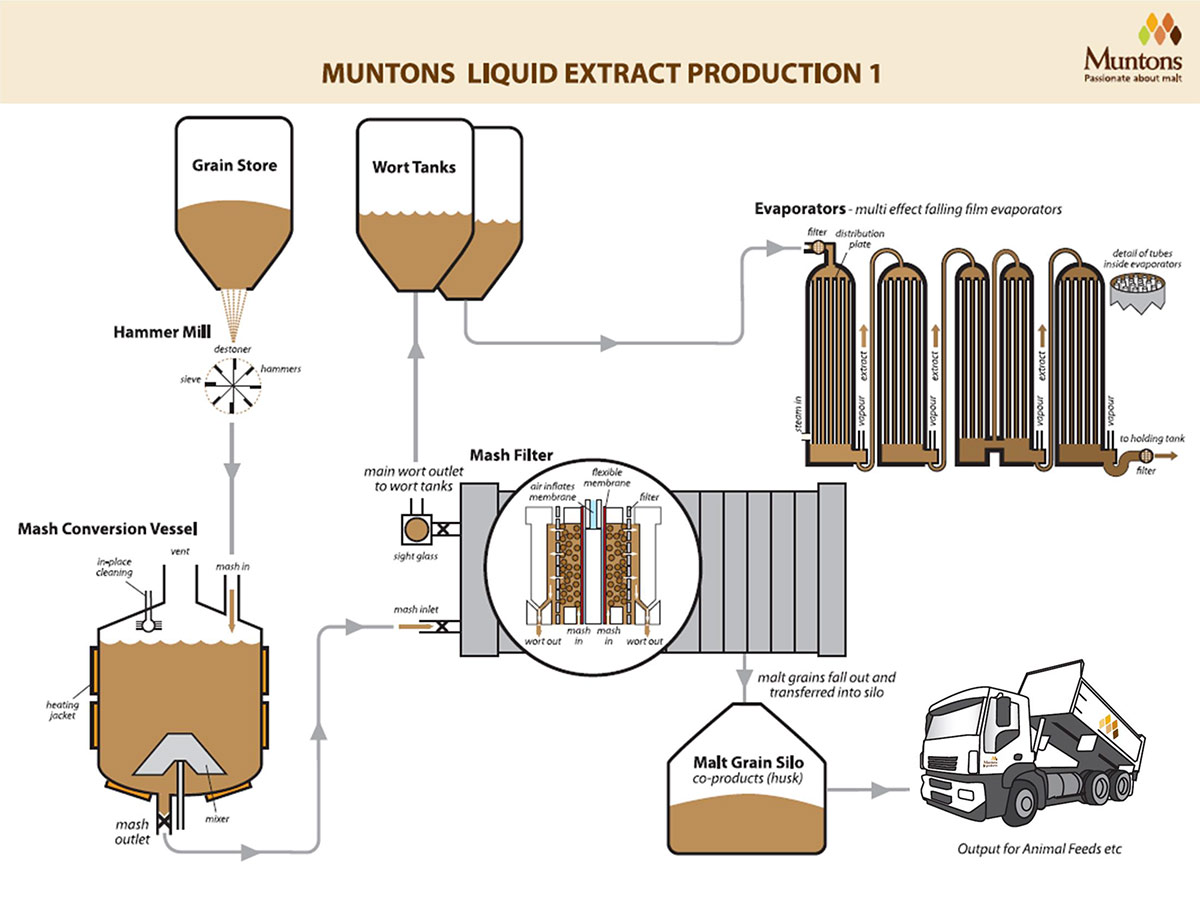Malt extract is quite a powerful homebrewing ingredient, especially for beginners, as it takes out some of the variables like hitting mash temperatures and volumes. While more seasoned homebrewers can use it to supplement sugars in a “big” brew or help reach a target gravity if you fell short.
Malt extract most commonly comes in liquid or dry form. Liquid malt extract (LME) is a molasses-like consistency, while dry malt extract (DME) is more of a fine powder. Extracts come in different types depending on the grains used in production. Extra-pale, pale, amber, pilsner, wheat and Maris Otter are just a few of the options available to homebrewers. Liquid malt extract can also come as pre-hopped, though much less common in the homebrewing community.
Believe it or not, the malt extract making process is much like the beginning of an all-grain brew day.
First, a large mash tun is filled with strike water and heated to the appropriate temperature. The amount of water needed is kept to a minimum, since extracts are low in water content. Once the liquor is heated, the grains are milled and sent to the tun for mash in. The grains undergo a standard mash, typically single step, where enzymatic activity breaks down components of the grain to create fermentable sugars, as any all-grain homebrewer or pro-brewer would do before moving to the boil. For extracts, the goals are usually a low water to grist ratio and quick yet efficient mash rest.
 Once the mash is complete, the sugary-sweet wort is sent through a pipe to a filter. The filter helps separate out the spent grain sediment, while sending the sediment-free wort to holding tanks. If a malt extract is hopped, it will often times undergo a boil in one of these tanks to promote isomerization.
Once the mash is complete, the sugary-sweet wort is sent through a pipe to a filter. The filter helps separate out the spent grain sediment, while sending the sediment-free wort to holding tanks. If a malt extract is hopped, it will often times undergo a boil in one of these tanks to promote isomerization.
From the tanks, the wort is sent to evaporators. This is where the process starts to really differ from your typical homebrew day.
The evaporators rid of 80 percent of the wort’s water content, leaving a syrupy, 20 percent liquid malt extract. Dry malt extract requires one additional step where the evaporated malt extract is sent through a centrifuge to further separate water from the malt. What is left is a powder-like substance.
That’s it! Essentially malt extract is made by mashing and dehydration.

No comments:
Post a Comment